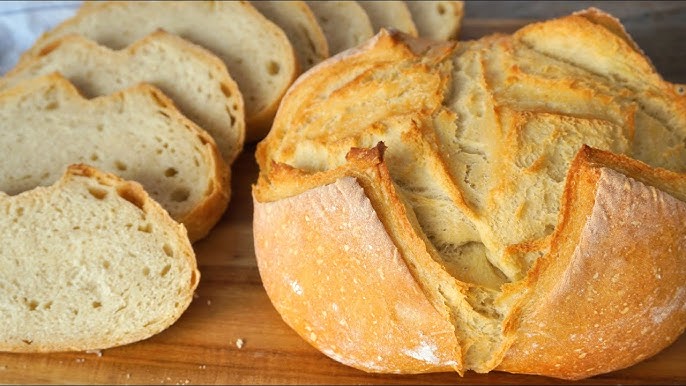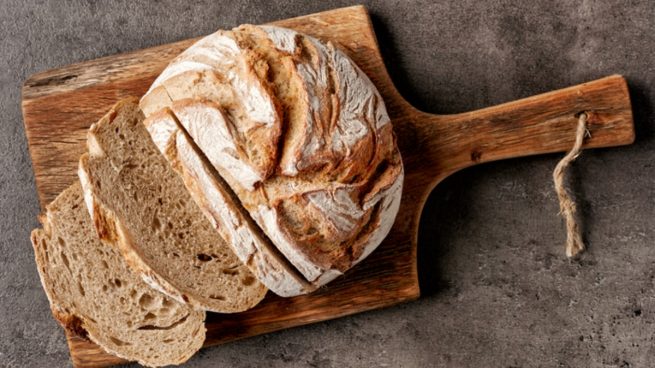The warm scent of freshly baked bread brings a special kind of comfort. For many, baking bread is more than just a task in the kitchen; it is a cherished tradition that offers a fulfilling experience. Whether you are a beginner or an experienced baker, grasping the essential elements of bread-making can enhance your creations significantly. This guide presents five crucial tips for crafting the perfect loaf, drawing inspiration from the insightful advice found in the article at Me Encantas. With these insights, you can make your bread-making journey both enjoyable and successful.
The Significance of Kneading for the Ideal Bread Texture
Why Effective Kneading is Vital to Prevent Dense Bread
Kneading is a pivotal step in the bread-making process, directly influencing the loaf’s texture and rise. Adequate kneading is essential for gluten development, the protein responsible for forming a network within the dough. This network captures air, resulting in a light and airy structure. As highlighted by Me Encantas, insufficient kneading hinders the dough’s flexibility, leading to a heavy, compact loaf.
Kneading enhances the dough’s elasticity and manageability, improving gluten formation. When kneading by hand, aim to stretch and fold the dough for approximately ten minutes. If you opt for a stand mixer, using the dough hook can streamline the process and save time. However, be cautious of over-kneading, which can make the dough dry and tough. Look for a smooth, elastic consistency and ensure the dough can stretch without tearing to determine readiness.
Essential Strategies for Mastering Bread Baking
Key Takeaways from the Me Encantas Article
Baking bread at home is a rewarding endeavor, and the Me Encantas article outlines five fundamental tips for creating a perfect loaf. Regardless of your baking skills, these insights can significantly enhance your results. Attention to detail—from choosing top-quality ingredients to refining your kneading technique—plays a crucial role in the success of your bread-making efforts.
The article emphasizes that the secret to excellent bread lies in utilizing the finest ingredients and implementing the right techniques. Selecting fresh, premium flour and yeast is critical, as is allowing the dough adequate time to rise. By adhering to these recommendations, you will not only enjoy the process of baking but also produce delectable, homemade bread.
Choosing High-Quality Ingredients for Exceptional Bread
The Impact of Ingredient Quality on Superior Baking
The quality of ingredients forms the foundation of delicious bread. The flour you choose greatly affects the texture and flavor of your loaf. Unbleached organic flour is often preferred due to its rich flavor and capacity to develop gluten, which provides the chewiness in bread. The Me Encantas article underscores this point as a crucial factor in achieving optimal results.

Yeast is another vital component in bread-making. Using fresh, active yeast guarantees that your bread rises correctly, resulting in a fluffy loaf. Always check the expiration date on your yeast before starting, as expired yeast can lead to a dense or flat loaf. Additionally, the quality of water used in your dough is equally important. Using filtered or bottled water can help avoid any chemicals that might disrupt the dough’s rise, ensuring a successful bake.
Perfecting the Proofing Process for Ideal Rise
The Importance of Adequate Proofing Time
Proofing—allowing the dough to rest and rise—is a critical phase in bread-making that greatly influences the final loaf’s quality. Giving the dough enough time to rise helps develop its texture, flavor, and overall structure. As emphasized in the Me Encantas guide, patience during proofing is essential. Rushing through this step may result in a loaf lacking the desired airy texture and complex flavor.
For optimal results, proof the dough in a warm, draft-free space, ideally between 75°F and 80°F. Cover the dough with a damp cloth to prevent it from drying out. Depending on the recipe, your dough may need several proofing rounds to achieve the intended rise and texture.
Storing and Maintaining Fresh Bread
Best Practices for Keeping Bread Fresh
After baking the perfect loaf, proper storage is crucial for maintaining its freshness and flavor. Incorrect storage can lead to stale bread with diminished texture. For short-term storage, use a paper or cloth bag to allow airflow, preserving the crispness of the crust. For longer storage, freezing the bread is recommended. Slice the bread before freezing to easily remove only what you need while keeping the remainder fresh.
Avoid using plastic bags or airtight containers for bread storage, as these can trap moisture and make the crust soggy. By following these storage tips, you can enjoy fresh, delicious bread for days after baking.
Selecting the Right Flour for Perfect Bread
The Influence of Flour Type on Bread Texture
Flour serves as the backbone of any bread, and the type you select significantly affects your loaf’s texture and rise. Bread flour, for instance, has a higher protein content, essential for developing the gluten structure needed for a chewy texture and robust rise. In contrast, all-purpose flour may produce softer loaves but lacks the strength required for more complex bread varieties. Whole wheat flour, known for its nutty flavor and denser crumb, is ideal for rustic, hearty loaves. Experimenting with various flours will help you discover the best match for your desired bread type.
The Necessity of Fresh Ingredients in Bread Baking
Why Ingredient Freshness is Essential for Great Bread
The freshness of your ingredients is vital to the quality of your bread. Fresh yeast ensures a better rise and adds depth to flavor, while fresh flour retains more nutrients and natural flavors. As noted in the Me Encantas article, always check expiration dates and store your ingredients properly. Flour should be kept in a cool, dry place, and yeast in the refrigerator to maintain its effectiveness. Following these steps will lead to more flavorful and successful baking.
Mastering the Art of Dough Preparation
The Fusion of Art and Science in Dough Creation
With your fresh ingredients gathered, the true magic of bread-making begins: transforming these simple components into dough. This process—mixing, kneading, and fermenting—is where bread becomes something extraordinary. Understanding the balance between art and science in dough preparation is critical for achieving remarkable results. Paying close attention to these stages ensures the dough achieves the right texture and structure for baking.
Achieving the Perfect Knead for Ideal Bread Texture
Techniques for Kneading Dough to Perfection
Kneading is essential for developing the gluten network that gives bread its signature texture and rise. However, finding the right balance is crucial; over-kneading can result in a tough loaf, while under-kneading may yield a dense, heavy bread. The guidance from Me Encantas suggests kneading until the dough appears smooth and elastic. Typically, this requires about 10 minutes of hand kneading or 5 minutes using a stand mixer. You can also perform the “windowpane test” to check if the dough is ready: stretch a small piece of dough into a thin, translucent sheet without tearing.
Exploring Flavor and Style Variations in Homemade Bread
Enhancing Bread with Unique Flavors and Ingredients
Baking bread provides endless opportunities for creativity, allowing you to explore various flavors and styles at home. The Me Encantas article encourages bakers to be inventive by incorporating dried fruits, seeds, herbs, or spices into their dough, personalizing each loaf to suit their tastes and dietary preferences.
For example, adding herbs like basil, rosemary, or thyme can impart a delightful flavor to savory loaves, complementing salads or soups. If you prefer sweet bread, consider mixing in dried fruits such as raisins or cranberries for a tasty breakfast option. Additionally, trying different bread types like rye, whole wheat, or sourdough introduces distinct flavors and textures, making each loaf a unique, customized creation.
Troubleshooting Common Bread-Making Issues
Strategies for Overcoming Common Baking Challenges
Even seasoned bakers can face challenges while making bread. From dough that won’t rise to loaves that turn out dense, understanding how to troubleshoot these common issues can elevate your baking skills.
Managing Sticky or Dry Dough
Sticky or dry dough is a common challenge in bread-making, but it can be resolved with the right adjustments. If your dough feels excessively sticky, it may be due to high hydration levels or overproofing. Adding a small amount of flour during kneading can help manage stickiness. Conversely, if your dough is too dry, it might not rise properly or achieve the desired texture. To remedy this, incorporate small amounts of water until the dough reaches the ideal consistency. As highlighted by Me Encantas, achieving the right balance in hydration is crucial for creating perfect dough.
Fixing a Dense Loaf
A dense loaf can stem from various factors, such as insufficient kneading, inadequate rise time, or inactive yeast. To avoid this, always ensure that your yeast is fresh and give your dough enough time to rise. Thorough kneading is necessary for developing the gluten structure that captures air, contributing to a light texture in your bread. The Me Encantas guide recommends allowing your dough to rise until it has doubled in size before shaping and baking for the best results.
The Significance of Temperature Control in Bread Making
Mastering Temperature for Better Dough and Bread
Temperature is a vital factor in every aspect of bread-making, from proofing the dough to baking the finished loaf. Maintaining the proper temperature for both your dough and oven is essential for consistently producing high-quality bread. According to the Me Encantas article, dough rises best in a warm, draft-free environment. If your kitchen is too cool, the dough may take longer to rise, impacting both its texture and flavor.
It is equally important to set your oven to the appropriate temperature before baking to ensure an even rise and crust development. An oven thermometer can help monitor the exact temperature, providing the best environment for your bread to bake.

Conclusion: Elevate Your Bread Baking with These Tips
Baking bread at home can be a delightful and rewarding experience. By following these essential tips for perfecting your bread-making skills, you can enjoy the process while creating delicious loaves to share with family and friends. The insights from the Me Encantas article highlight the importance of quality ingredients, proper kneading, and adequate proofing. With practice and patience, you can master the art of bread baking and elevate your culinary skills to new heights.

